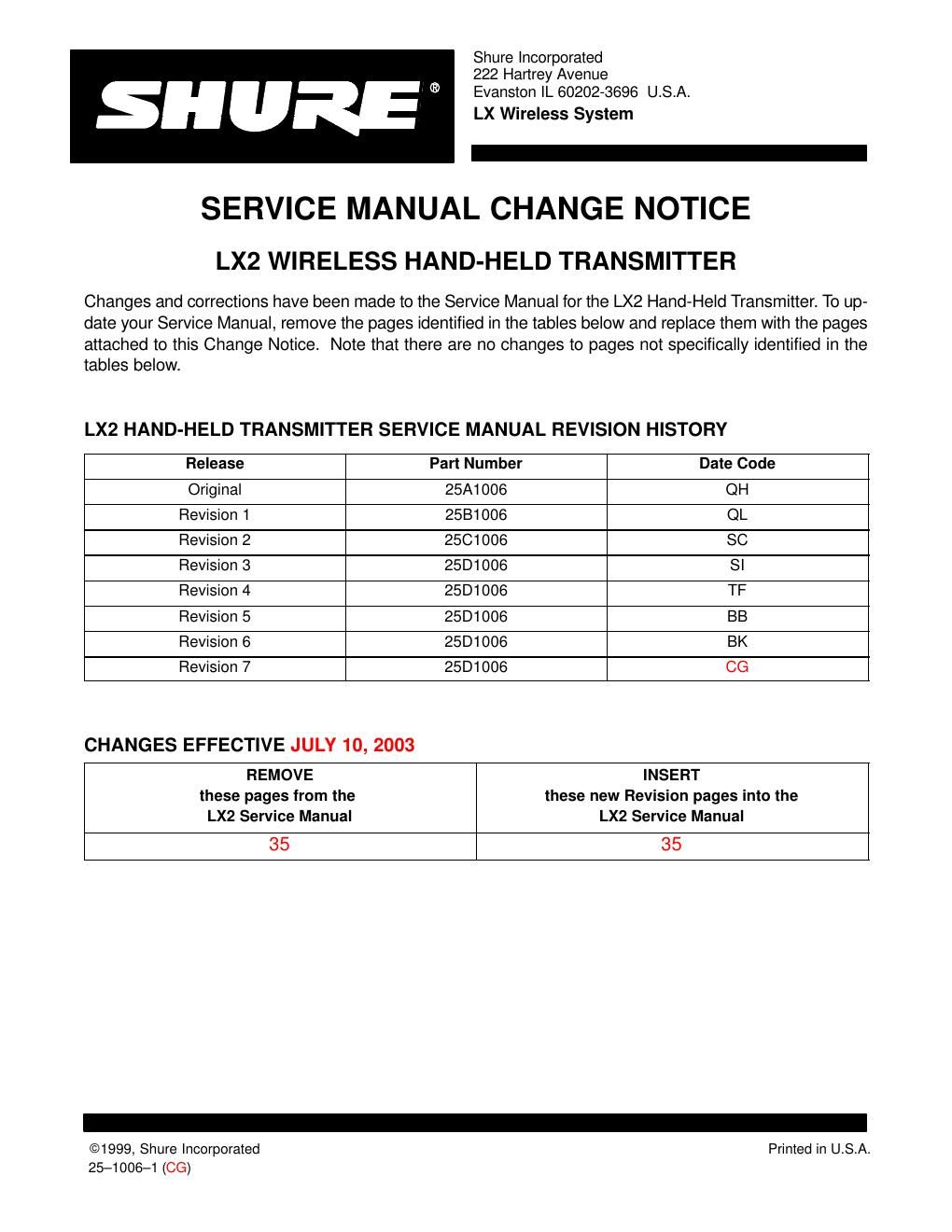Shure lx2 wireless mic service manual
This is the 45 pages manual for shure lx2 wireless mic service manual.
Read or download the pdf for free. If you want to contribute, please upload pdfs to audioservicemanuals.wetransfer.com.
Page: 1 / 45
